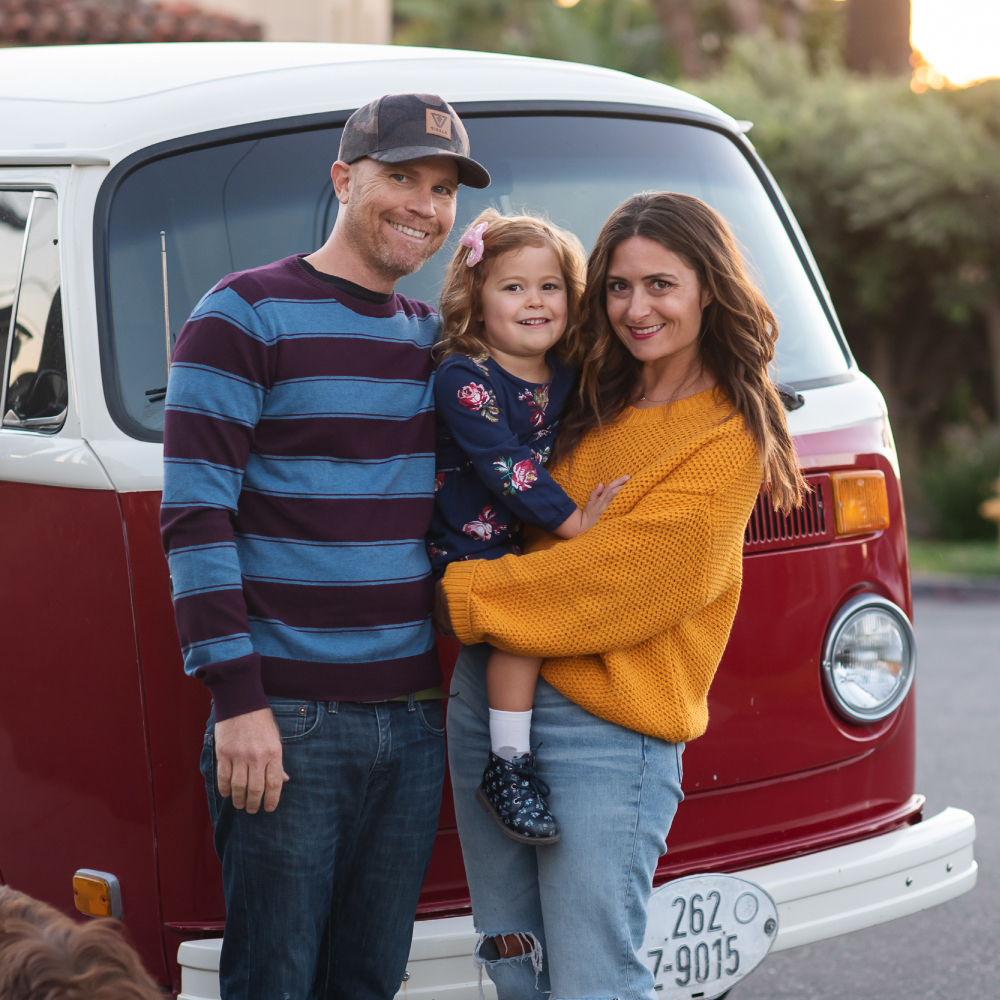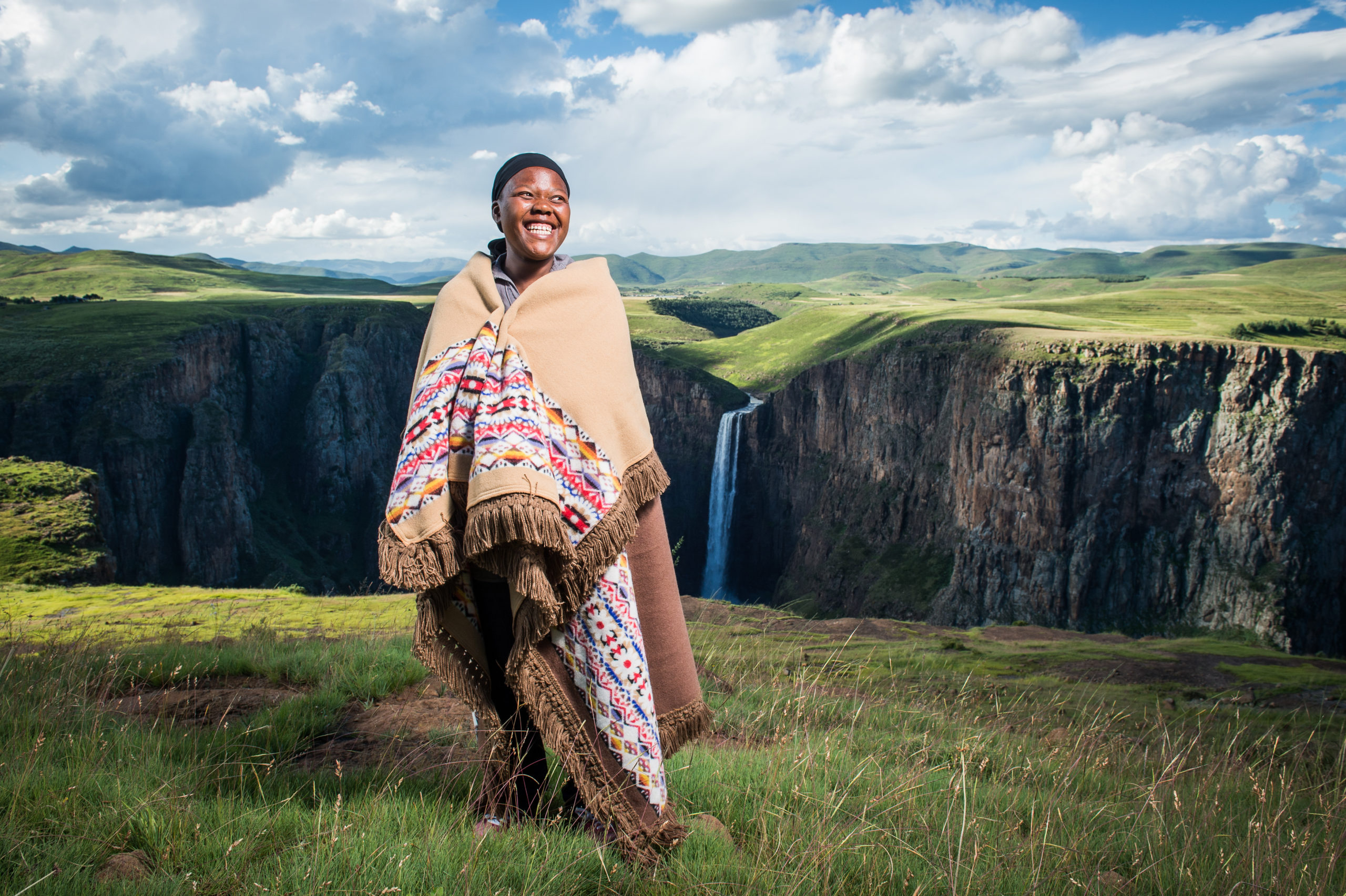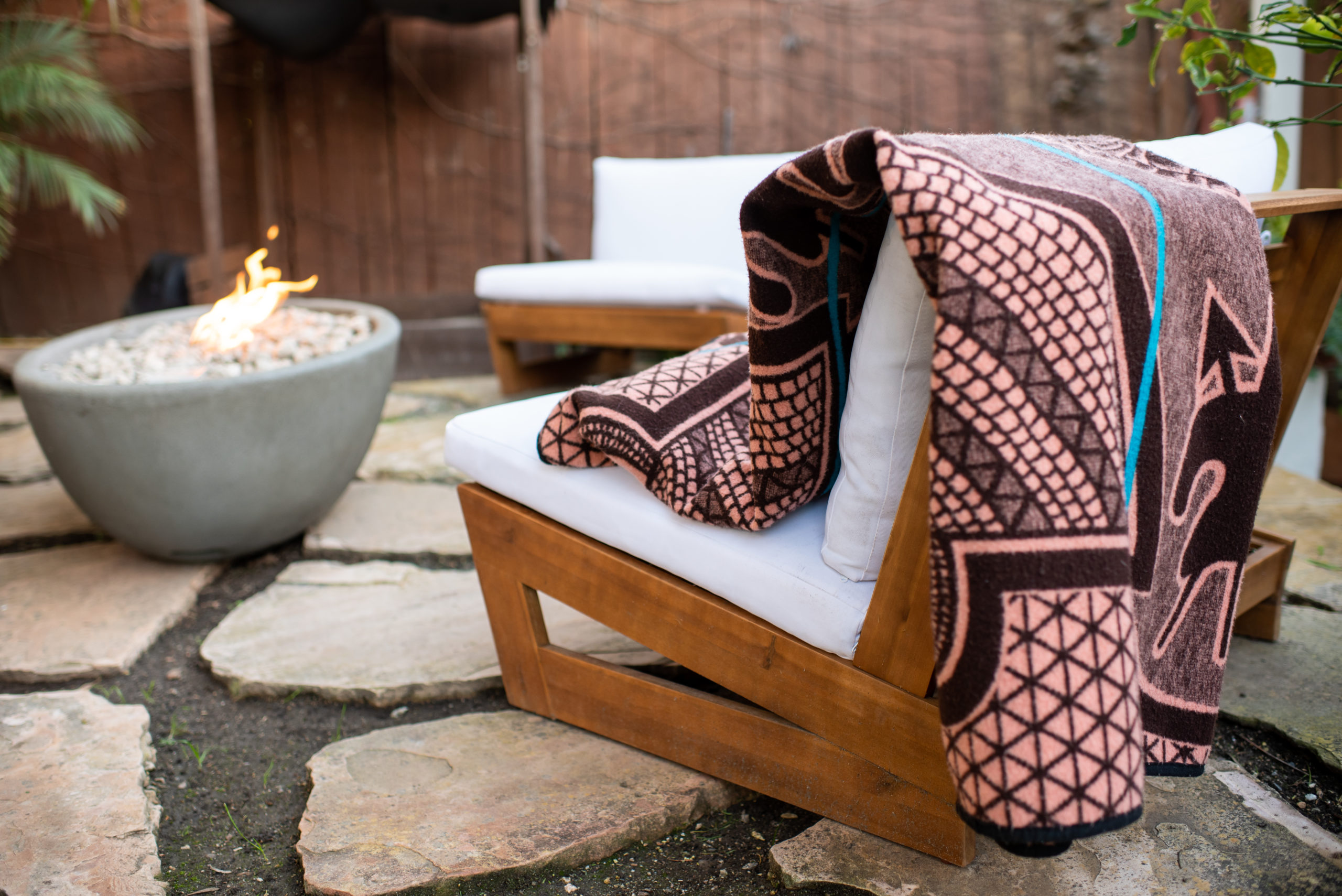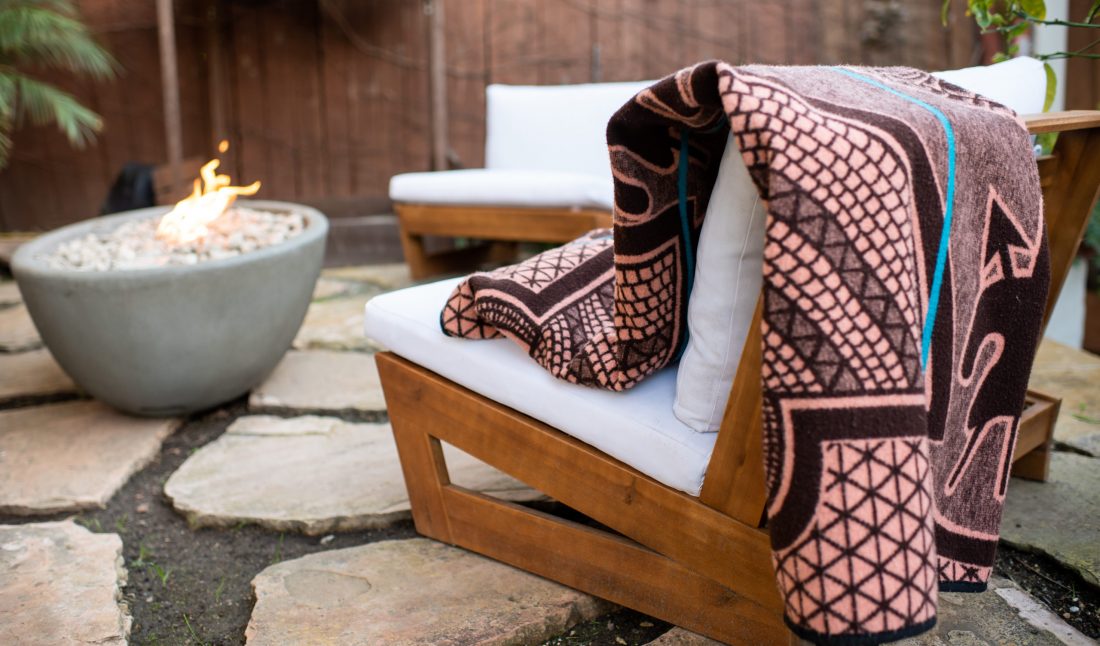Steve Watts was born and raised in South Africa, guided by his mother’s dedication to philathropy and her community. In 2018, when she sadly passed from cancer, Watts wanted to create something unique in her honor, in the honor of their African heritage, and in honor of the people of that make up their community.
Today, with his wife Angela, Watt’s shares stories of South African history through a blanket company he founded called Thula Tula. The brand’s name—meaning “hush hush baby”—memorializes a special lullaby Sheila used to sing to Watts when he was young. Inspired by these memories, and new memories he’s making with his wife and his daughter, Venice, Thula Tula aims to keep tradition alive while giving back.
Created in the town of Randfontein, the blankets feature traditional Basotho designs from centuries past. These motifs are culturally and historically significant to the people of Lesotho who wrap themselves in blankets adorned in unique patterns for life’s everyday moments. Traditional ceremonies, weddings, and births are all celebrated by being covered in these heirloom wool-blended blankets.
Ethically and sustainably produced, Thula Tula is the sole supplier of the original Basotho blanket with direct permission from the Basotho Nation. Accompanying its deep history are philanthropic missions, too, including providing free clean drinking water to 30 school children in the area for each blanket sold.
Whitewall spoke with Angela Watts to learn more about Thula Tula’s mission, and the tradition of keeping “kobo ke bophelo”—meaning “the blanket is life”—alive.
 Steve, Venice, and Angela Watts, courtesy of Thula Tula.
Steve, Venice, and Angela Watts, courtesy of Thula Tula.
WHITEWALL: Thula Tula has a special relationship with the King of Lesotho and the Lesotho Royal family. Why is this is important for the brand’s messaging and ability to create authentic awareness?
ANGELA WATTS: Our mill in South Africa is the only approved maker of Basotho heritage blankets by the King of Lesotho and the Royal Family. They have a close relationship with them, and since has given Thula Tula the exclusive rights to sell here in the U.S. and Canada. It is important for us because we want to make sure that everything we do, in turn, will benefit the people of Lesotho as this is not ours. It is our job to simply tell the story of the blankets, the country, and the people.
WW: What do you feel the Basotho prints and materials communicate about the Basotho nation?
AW: The Basotho blankets distinguish this nation from others by the way in which the blankets are worn as part of their everyday life. Across the kingdom, a variety of these blankets are worn by the people of Lesotho to represent the different rites of passage in society from childbirth, marriage, burial ceremonies, and more.
For generations, the blankets have been a constant tradition that is infused into the Sotho culture. The blankets themselves communicate the style, culture, and tradition that the people are so proud of. Blankets are interwoven into the fabric of society. As the saying goes: “kobo ke bophelo,” or “the blanket is life.”
 Courtesy of Thula Tula.
Courtesy of Thula Tula.
WW: How is the brand creating special Basotho blankets based on traditional symbols and heritage found in Africa?
AW: Most of the Basotho blankets developed up to now, have used iconic symbols of Basotho tradition like the “Mokorotlo,” which is the legendary unique Basotho Hat, and the Basotho shield as elements of the Basotho blanket design. We are also working in conjunction with our mill who has a close relationship with the Lesotho Royal family to create designs by young up-and-coming Lesotho and Southern African artists and also more established artists like the Ndebele muralist Esther Mahlangu, who is one of South Africa’s most famous artists. It is an honor to be able to share the designs of these artists and tell their stories.
WW: What goes into ensuring the textiles are kept traditional and as close to their original context as possible?
AW: The Basotho nation is very particular about their blankets that it must have a distinctive wool touch. The winter conditions are quite harsh in the mountains and the blankets must keep out the cold in well below freezing temperatures.
WW: What is the creative process like behind making a blanket—from sourcing materials to using a loom? How is this specific community in South Africa involved?
AW: The designs have been handed down through the years. Frasers Ltd. were the original custodians of Basotho Heritage Blankets until Our Mill in Randfontein just outside of Johannesburg were given custodianship in 1991—and with that comes the role of protecting the original context. This is a block-mounted print of a pastel artwork that was commissioned in 1976 by the artist Vos. 1976 was the centenary year of Frasers Ltd.
The cotton and wool is all sourced locally and they actually own their own cotton gin which is located in Kwa-Zulu Natal on the east coast of South Africa. All the cotton and wool is dyed at the mill in Randfontein.
 Courtesy of Thula Tula.
Courtesy of Thula Tula.
WW: How does Thula Tula’s mission go beyond honoring the Bashoto heritage to helping those that create its blankets?
AW: Our main focus right now above all is to create well paid meaningful jobs for the local community around the mill and ginn.
In South Africa alone, the unemployment rate hovers around 32 percent. The United States is the biggest economy in the world with enormous buying power. Africa has some of the most underrated talented craftsmen and women. The goal of Thula Tula is to match that buying power with the endless talent to create a global exchange of not only goods but of culture and ideas. We are really just the custodians of the products sold to share the African culture with U.S. consumers.
WW: During the pandemic, the mill where the blankets are made, like so many other businesses, was impacted, yet Thula Tula was recently featured on “Good Morning America” and it sold out over 1,000 Basotho blankets in just six hours. How does the company balance profit and philanthropy?
AW: This not only had a huge impact on the health of the mill during Covid and the people that it employs but also showed us that people not only gravitate toward a well-made and beautiful product with purpose and a story. In some way, it justified our belief in this beautiful blanket, the mill, and the people who make them.
We also have a Water and Warm program. For every blanket we sell, we are able to provide free and clean drinking water to 30 school children in Lesotho and South Africa. We will have our first school site set up next month. We are also working with our mill to identify local orphanages to donate blankets to. More to come on both these programs in the upcoming months!
 Courtesy of Thula Tula.
Courtesy of Thula Tula.
WW: Right now, so many of us are still at home and unable to physically be with loved ones. How does the brand bring a sense of warmth and familiarity to those longing for connection?
AW: I actually just got a message on Instagram specific to this. A daughter just sent the Ghana Kente throw to her mom. She said she turns 80 this month and she could not stop raving about the blanket colors and softness (she even sent us a picture of her mom wrapped in it!) It was so sweet. Another person said they were happy to gift a Basotho Blanket to their wife who had one 16 years ago and hasn’t been able to go back to Lesotho since.
We sincerely hope that Thula Tula can bring joy, happiness, and connection by the history and culture that comes with each blanket.
WW: What is your favorite blanket and why?
AW: I live under the Basotho Kharetsa (Salmon) every night when I am relaxing on the couch. I am always cold, so the Basotho blanket will always do the trick to keep me warm. I also love the Salmon color! And Steve will take the Basotho blanket camping with him, and it is perfect to repel wind and rain. Sit in front of the campfire all night long, then just leave it outside the next day, and there will be no campfire smell.
I also love the Mali Mud Cloth Bed blanket—it fits up to a California king bed and is just so big and warm. And I love the design.
WW: What is next for Thula Tula?
AW: We want to continue to expand Thula Tula in the home goods category. Some products in the works are rugs, towels, and table runners.









